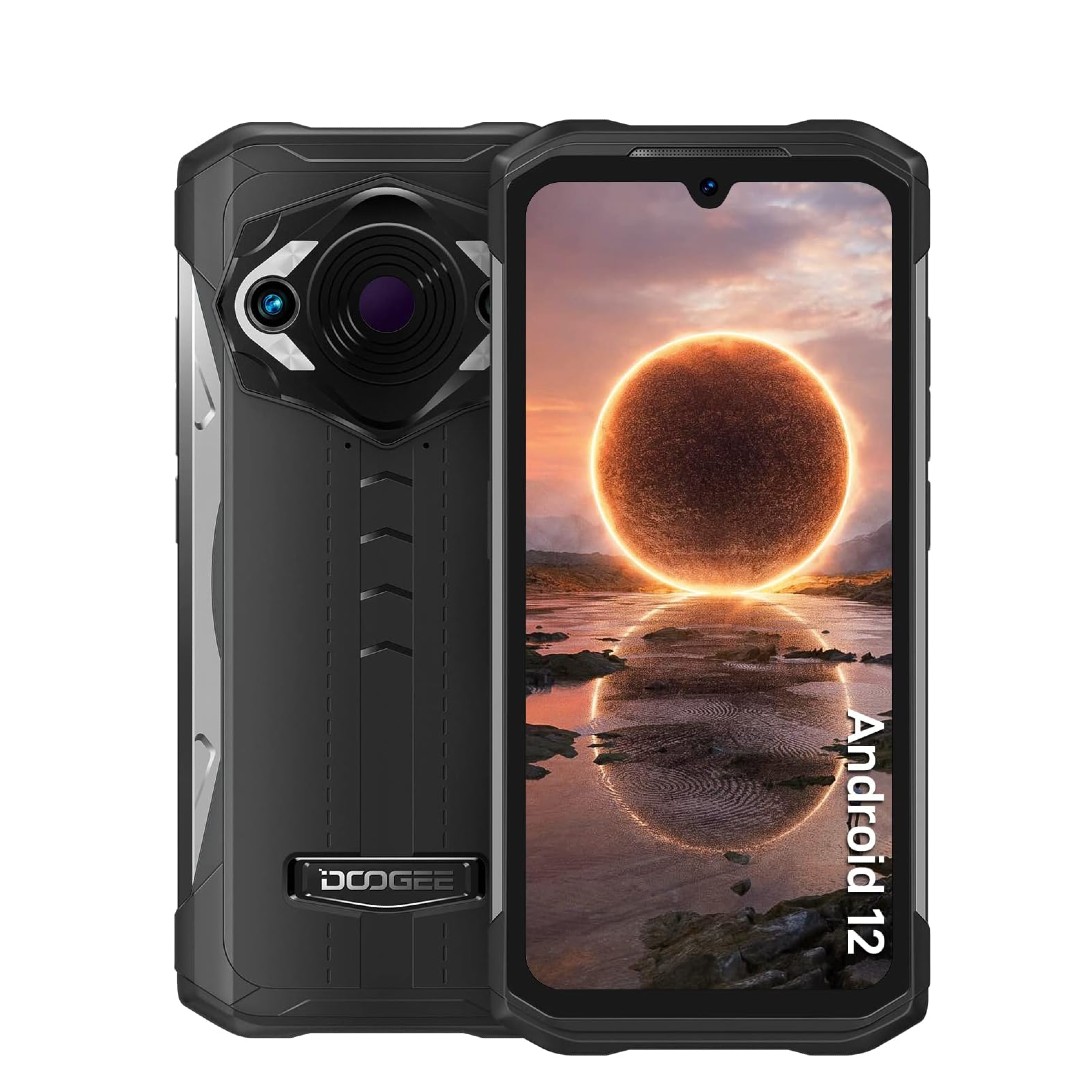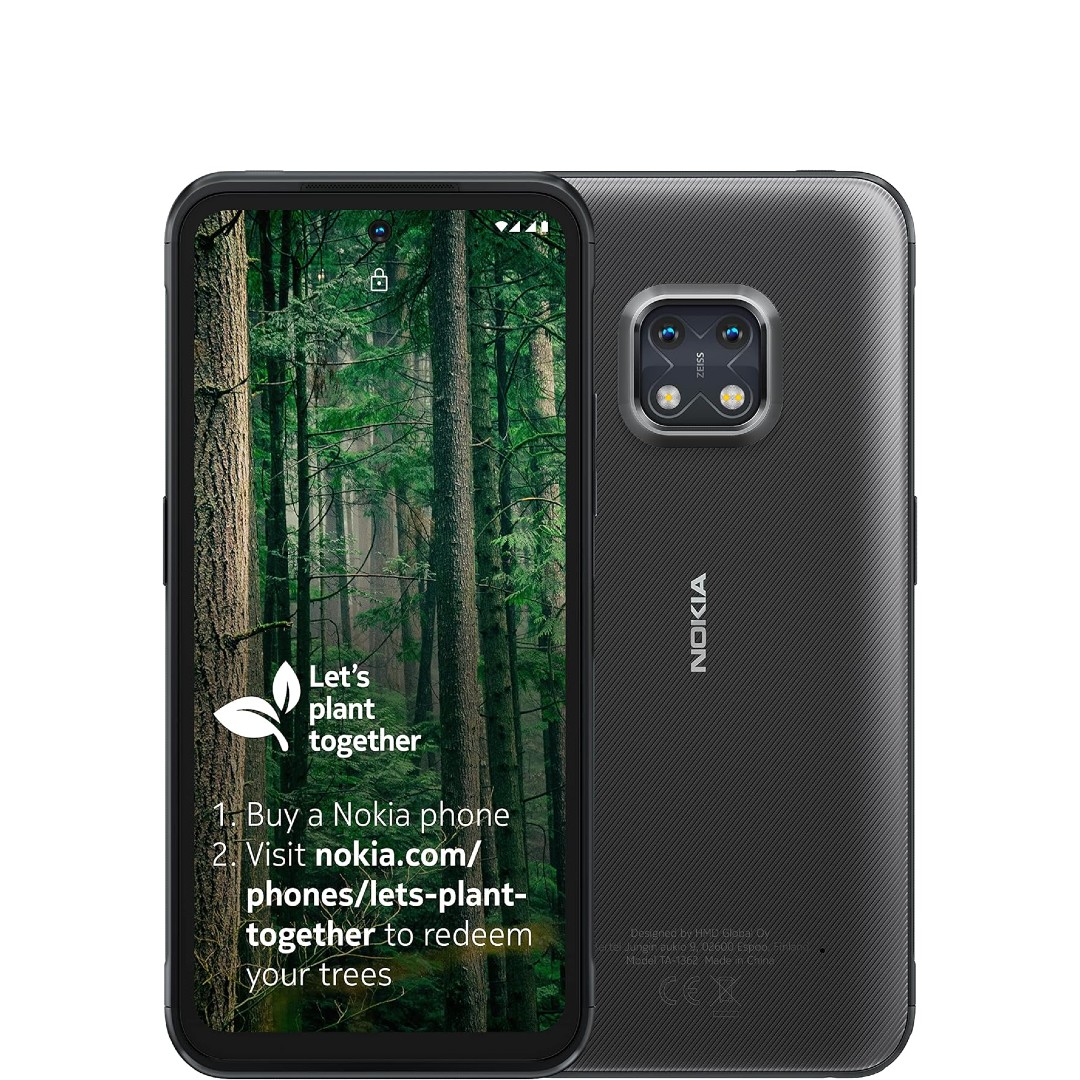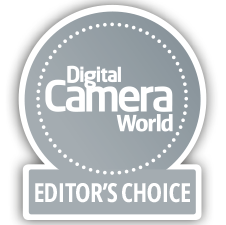Best rugged phone: smartphones that can take a beating and more
Need a phone that's near-indestructible? We reveal the best rugged phone for your needs

In 2025, the best rugged smartphones aren't just durable and shockproof: they're sophisticated powerhouses too. So you don't just get military-grade durability; you can get excellent cameras, extensive battery life, and cutting-edge technology like night vision and thermal imaging too.
Whether you're scaling mountain faces, working on construction sites, or simply tired of cracked screens and water damage, these devices are engineered to survive conditions would endanger conventional smartphones. From phones with week-long battery life to devices that double as projectors and power banks, the modern rugged phone category offers solutions for every scenario.
Thus guide examines the most capable rugged smartphones available today, evaluating everything from drop resistance and waterproofing to camera quality and specialized features. We'll help you navigate the trade-offs between protection and performance, ensuring you find the perfect balance for your lifestyle or profession.
Our top picks

The S200 boasts a 100MP camera with solid AI features, night vision, a spectacular batter, and MIL-STD-810H compliant (and pretty cool-looking) rugged design
Read more below

The Tank 3 Pro redefines what's possible in a one phone, cramming in a DLP projector, 1,200-lumen camping light, massive 23,800 mAh battery, and capable camera system.
Read more below

With a thermoplastic frame, this phone is built to take a good deal of punishment, while managing to achieve a kind of hybrid look, and boasting a 48MP camera.
Read more below

If you need to take a thermal imaging camera to work, this rugged 5G phone not only represents a capable phone but one less thing to carry.
Read more below

This phone has an exceptional battery life, night vision and thermal imaging cameras to help you see in the dark, and it's nearly indestructible.
Read more below

The XR20 is all about being an ordinary phone which just happens to be pretty tough: you can drop it 1.8m (5ft10) onto concrete without it breaking it.
Read more below
Best rugged phone
Why you can trust Digital Camera World
Best for most
Specifications
Reasons to buy
Reasons to avoid
✅ Camera quality: 100MP AI Quad Camera with Sony sensors, including a 20MP Night Vision camera and a 20MP selfie camera, capable of 4K video.
✅ Massive battery life: The 10100 mAh battery will see you last through a very long day.
❌ Not a big update: Design and build are similar to the Doogee S98 Pro.
❌ Styling is vulnerable: Features like the circular rear screen also add more vuunerabilities.
A rugged phone that aims to be the kind of phone that can keep you going – and deliver – all day long. It makes no compromise on the camera quality or screen to do that. It even goes a bit further with special extras like the circular rear display you can customise for all kinds of functions, our use as a watch face.
In fact, ironically, if anything, it is this which detracts slightly from the ruggedness – it is, afterall, as another screen – a slight extra weakness. Still it comfortably hits the military standard and can survive high ingress protection standards for dust and water. In fact you can shoot video underwater if you want.
Still, this phone is priced attractively and, while not everyone will love the aggressive styling, it has a premium feel and a distinct 'Wow factor' it is hard to deny. The slight extra bulk that it's bigger battery and protective design necessitates is part of that, but the attention isn't all bad.
The included 'Toolbag' is great for tradespeople and DIY fans too – a compass, sound meter, picture hanging tool, and all the usual (as well as a torch) have provided apps. The camera isn't too shabby either, thanks in part to its AI (though, oddly, it doesn't default to its maximum 100MP resolution).
Ultimately, it isn't the best phone, but if you want your phone to survive a beating, it's a very good one that'll do that too, so you can have a rugged phone and not feel too far behind the flagship crowd.
See our full review of the Doogee S200 for sample images
Best features

Specifications
Reasons to buy
Reasons to avoid
✅ Multi-tool functionality: Combines smartphone, projector, power bank, and camping light in one device.
✅ Exceptional battery life: 23,800 mAh battery provides up to a week of use and can charge other devices.
✅ Professional features: Night vision camera and thermal capabilities ideal for specialized work
❌ Weight and size: At 696g and 30mm thick, it's more like carrying a small brick than a phone.
❌ Niche appeal: Only worthwhile if you'll actually use the projector, camping light, and specialized cameras.
This isn't just a rugged phone – it's a portable command center that happens to make calls. The Tank 3 Pro redefines what's possible in a single device, cramming a DLP projector, 1,200-lumen camping light, massive 23,800 mAh battery, and comprehensive camera system into one incredibly robust package. (Albeit one that is significantly heavy at 696g.)
The standout feature is undoubtedly the built-in laser projector, capable of displaying an 80-inch image in dark conditions. Whether you're giving presentations at remote work sites or hosting movie nights while camping, this transforms any wall into a screen. The manual focus wheel provides precise control, while auto-keystone correction handles alignment issues.
Battery performance is simply phenomenal – expect 5-7 days of heavy use, with standby times extending to months. The device doubles as a high-capacity power bank, eliminating the need for separate charging accessories during extended outdoor adventures.
The camera system impresses with its 200MP main sensor and dedicated 64MP infrared night vision camera that works in complete darkness. While image processing leans toward natural rather than vibrant colors, the night vision capability provides genuine utility for professionals and outdoor enthusiasts.
Note: I'm specifically recommending the Tank 3 Pro over its successor, the Tank 4 Pro, because the newer model downsizes to an 11,600 mAh battery – less than half the capacity. While this makes the Tank 4 Pro significantly lighter, for the dramatic reduction in battery life undermines one of the Tank 3 Pro's key advantages. Some people may prefer the weight savings, of course, as the Tank 3 Pro is seriously heavy.
Read more: 8849 Tank 3 Pro review
Best for extremes
Specifications
Reasons to buy
Reasons to avoid
✅ Cold-resistant battery: Battery is designed to function in freezing temperatures, adding to its reliability.
✅ High-quality thermal camera: 48MP thermal-imaging camera with a high resolution and a fast 25fps frame rate.
❌ Bulky Design: 23mm thick frame makes it bulkier and less sleek than many other smartphones.
❌ Basic Android 11: This makes the OS slightly dated compared with other rugged phones.
This 5G phone is built to handle temperature extremes and report back; it has an excellent 48MP thermal-imaging camera with an unusually high resolution and frame rate (25fps) as well as the ability to survive in Arctic temperatures (we tested one in the freezer). The G1 Pro’s styling makes no attempt to hide its rugged nature, using the 23mm thick protective frame to house a 33mm diameter 3.5-watt speaker which can put out 110db.
The 8-core system is nothing to write home about, but fast enough on the clean Android 11 supplied, while other useful tools – including fingerprint ID, NFC, Bluetooth 5, 18W wireless charging and a definable side key – are all there. Ruggedization hasn’t stopped microSD cards or 3.5mm headphones from being used if required, either.
Some key features of the AGM Glory G1 Pro include a cold-resistant battery, 20MP infrared night vision camera, booming loudspeaker with a 109dB loud sound, dual-torch design, and is drop-proof, dust-proof, and water-proof tested. For more details, read our full AGM Glory Pro review.
Best thermal camera
4. Ulefone Armor 11T 5G
Specifications
Reasons to buy
Reasons to avoid
✅ It offers high-resolution: This phone is able to shoot 4K video and 48MP images, as well as being rugged.
❌ Ruggedness is limited: Without an extra case, it may not be as durable in extreme environments compared to other fully rugged phones.
If you need to take a thermal imaging camera to work, this rugged 5G phone not only represents a well-equipped modern phone but one less thing to carry. The camera array isn’t just useful for assessing heat issues; there is a macro lens for examining close up flaws in visible light.
The slim profile, 7nm process and spec remains within touching distance of flagship phones which means you do get high end features like fingerprint ID, face unlock, and wireless charging. You can capture 4K video as well as 48-megapixel images, but you’ll need a case to beat some of the others in this list when it comes to the drop test.
Best night vision
Specifications
Reasons to buy
Reasons to avoid
✅ Ideal for trades: Features include durability, thermal imaging and strong battery life.
✅ Multitasking and gaming: 8GB LPDDR4x RAM and the Helio G96 processor provide solid performance.
❌ No 5G: Lacks 5G connectivity for faster network speeds.
❌ Niche appeal: Best suited for those who thermal imaging.
If you're looking to save money on your electric bill this winter, then the Doogee S98 Pro is the phone for you. It has an exceptional battery life, night vision and thermal imaging cameras to help you see in the dark, and it's nearly indestructible - so you'll hopefully never have to get it repaired.
Other out-of-this-world specifications of this device include an impressive 8GB LPDDR4x RAM to support multitasking when combined with the very capable Helio G96 processor for uninterrupted mobile gaming.
High-level performance is also guaranteed with the Mali-G57 MC2 GPU, and super long-lasting battery life. As long as you're not too bothered about 5G and having the best main camera, the Doogee's other features are outstanding, especially for those who work in a trade. For more details, read our full review of the Doogee S98 Pro.
Best cheap
Specifications
Reasons to buy
Reasons to avoid
✅ Zeiss optics: This adds credibility to its photographic capabilities, even if the execution falls short.
✅ Long-term support: Nokia’s 3-3-3 promise includes three years of updates and a one-year screen replacement.
❌ Not for Power Users: This phone is built more for durability than high performance, so it may not satisfy users who need top-tier processing power or gaming capabilities.
❌ Average Performance: The phone is a middle-of-the-road device spec-wise, not designed for heavy tasks like gaming.
The XR20 is all about being an ordinary phone which just happens to be pretty tough; it’s designed not to look like a power tool and is even offered in ‘Ultra Blue’ as well as ‘Granite Grey.’ Like most rugged phones, the XR20 is a middle-of-the-road device as far as the spec sheet is concerned, but this is one you can drop 1.8m (5ft10) onto concrete without it breaking, and withstand being submerged in water.
Perhaps the most striking aspect of this phone, when so many will just sell you the handset and move on, is Nokia’s three-year commitment to updates (and one year to screen replacements) as part of its 3-3-3 promise. Other modern treats like wireless charging make this a great phone.
Spec-wise this is certainly not a gaming powerhouse, but it hits all the rugged notes and does so in a new way, and it's 5G compatible too. We found the camera unit to be pretty underwhelming, despite being equipped with Zeiss optics and boasting a main 48MP camera sensor. See our full Nokia XR20 review.
Best for medical
7. CAT S42 H+
Specifications
Reasons to buy
Reasons to avoid
✅ Antibacterial coating: Biomaster antimicrobial silver-ion technology inhibits bacterial replication.
✅ Long battery life: The 4,200mAh battery lasts longer due to the phone’s lower power demands.
❌ Basic Camera: 13MP camera isn't going to please photography enthusiasts.
❌ Outdated Gorilla Glass: The phone uses Gorilla Glass 5, which is not the latest version.
There’s no arguing with CAT’s reputation in the trades, but in this post-pandemic world, the obvious benefit of a handset with permanent anti-bacterial technology is clear.
Every component is blended with Biomaster, an antimicrobial silver-ion technology which can inhibit bacteria replicating, and won’t be removed from the handset, even with bleach. It’s clear this phone isn’t built for speed, and nor will a single 13-megapixel camera impress photographers, but the 4,200mAh battery will last a little longer that way and this is a handset with a very specific purpose.
It’s also worth noting that, the Gorilla Glass is only version 5. Nevertheless this broadly equals its siblings on the ruggedness score, and beats anything on hygiene.
Best lightweight
8. Samsung Galaxy XCover Pro
Specifications
Reasons to buy
Reasons to avoid
✅ Business-oriented: This phone combines rugged features with practical business tools.
✅ mPOS and NFC Ready: It's equipped to take card payments.
❌ Mid-range ruggedness: While durable, it's not be as tough as some other rugged phones.
Samsung’s XCover PRO is rugged, sure, but it’s built with business in mind too, which means a removable 4050mAh battery (so you, or your staff, can go on indefinitely). Swapping batteries is achieved by sliding down a back cover to make the swap, but despite having a built-in case the handset’s Gorilla Glass 5 screen manages to cover a good amount of the handset’s surface and the device achieves the level of slickness associated with Samsung.
More practically the handset is mPOS and NFC ready, making it capable of taking card payments without additional gear. Samsung also speak proudly of their high-quality anti-hacking system, Knox, which should suit those running transactions nicely.
Best high-res display
Specifications
Reasons to buy
Reasons to avoid
✅ FLIR thermal imaging: Equipped with the Lepton 3.5 sensor (160 x 120), this is a great choice for professionals who require thermal imaging.
❌ Outdated operating system: Runs on Android 10, which limits access to newer features and security updates.
FLIR’s tech is essential for many professionals, and the Lepton 3.5 sensor (160 x 120) is useful. It’s a shame that CAT don’t seem to be keeping pace with flagship handsets; Android 10 is now five years out of date and the single rear camera (except the thermal one) is a relatively paltry 12 megapixels.
Nevertheless CAT is a respected brand for a reason and the rugged handset does boast a programmable side button so this handset can easily become part of a workflow, surviving a good few tough days. In fact hitting the IP69 standard puts it ahead of plenty of rugged handsets, no mean achievement, and the casing’s mix of aluminum and non-slip rubber means you probably won’t be drop-testing it too often anyway!
Read our full Cat S62 Pro review.
FAQs
What is a rugged phone?
A rugged phone is a smartphone built to withstand tougher conditions than a standard phone. They're typically more resistant to drops, shocks, dust, water, and extreme temperatures.
Why should I buy a rugged phone?
Rugged phones are ideal for people who work in harsh environments, like construction, trades, or outdoor professions. They're also great for anyone who's clumsy with their phone or spends a lot of time outdoors in the elements.
What do military standards for rugged phones cover?
The US military has developed a series of standards in which devices are tested in appropriate and extreme weather environments. These cover acceleration, temperature (including rapid changes), shock, solar radiation, rain, fungus, vibration, and more. MIL-STD-810H is a newer version of the same set of standards, released in 2014, but that doesn't make it better than 810G per se, just a bit more recent.
How to choose the best rugged phone
Pick a phone that can handle your environment. Look for an IP rating that fits your needs (IP68 for dust and deep water). Consider how much shock protection you need (military standard ratings are helpful). Think about battery life: rugged phones often excel here. And don't forget about basic features like processor, camera, and software.
How we test smartphones
At our photography-focused website, we meticulously evaluate the image and video capabilities of smartphone cameras. We assess resolution, noise levels, and color accuracy, benchmarking them against competing camera models. When unique features like night modes or portrait modes are present, we rigorously test their real-world performance against the manufacturers' claims. However, camera phones serve as versatile digital companions, so our reviews extend beyond photographic aspects. We also scrutinize general handling, user-friendliness, and practical considerations like battery life to provide a comprehensive analysis.
The best camera deals, reviews, product advice, and unmissable photography news, direct to your inbox!

With over 20 years of expertise as a tech journalist, Adam brings a wealth of knowledge across a vast number of product categories, including timelapse cameras, home security cameras, NVR cameras, photography books, webcams, 3D printers and 3D scanners, borescopes, radar detectors… and, above all, drones.
Adam is our resident expert on all aspects of camera drones and drone photography, from buying guides on the best choices for aerial photographers of all ability levels to the latest rules and regulations on piloting drones.
He is the author of a number of books including The Complete Guide to Drones, The Smart Smart Home Handbook, 101 Tips for DSLR Video and The Drone Pilot's Handbook.









